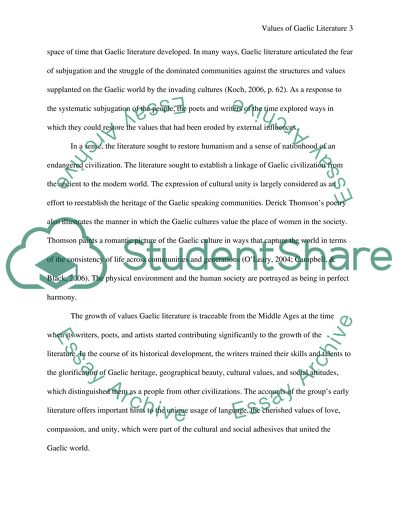Cite this document
(Values of Gaelic Literature Essay Example | Topics and Well Written Essays - 2250 words, n.d.)
Values of Gaelic Literature Essay Example | Topics and Well Written Essays - 2250 words. Retrieved from https://studentshare.org/literature/1612296-gaelic-literature-what-values-are-expressed-in-gaelic-literature
Values of Gaelic Literature Essay Example | Topics and Well Written Essays - 2250 words. Retrieved from https://studentshare.org/literature/1612296-gaelic-literature-what-values-are-expressed-in-gaelic-literature
(Values of Gaelic Literature Essay Example | Topics and Well Written Essays - 2250 Words)
Values of Gaelic Literature Essay Example | Topics and Well Written Essays - 2250 Words. https://studentshare.org/literature/1612296-gaelic-literature-what-values-are-expressed-in-gaelic-literature.
Values of Gaelic Literature Essay Example | Topics and Well Written Essays - 2250 Words. https://studentshare.org/literature/1612296-gaelic-literature-what-values-are-expressed-in-gaelic-literature.
“Values of Gaelic Literature Essay Example | Topics and Well Written Essays - 2250 Words”. https://studentshare.org/literature/1612296-gaelic-literature-what-values-are-expressed-in-gaelic-literature.


